Employer Branding and Attractiveness: Coca-Cola Workplace Example
VerifiedAdded on 2023/06/07
|7
|836
|462
Presentation
AI Summary
This presentation provides an overview of employer branding, defining it as the process of building an organization's reputation as an employer of choice. It highlights the importance of employer branding in attracting and retaining high-quality employees, leading to improved business plans and innovation. The presentation discusses key concepts and theories, including Maslow's Hierarchy of Needs, and emphasizes the role of employer branding in recruitment, selection, and retention processes. A workplace example featuring Coca-Cola Europe's employer brand refresh is presented, illustrating the practical implications of employer branding strategies. The presentation concludes by emphasizing the significance of employer branding in enhancing a company's image and attracting top talent and includes a list of references.
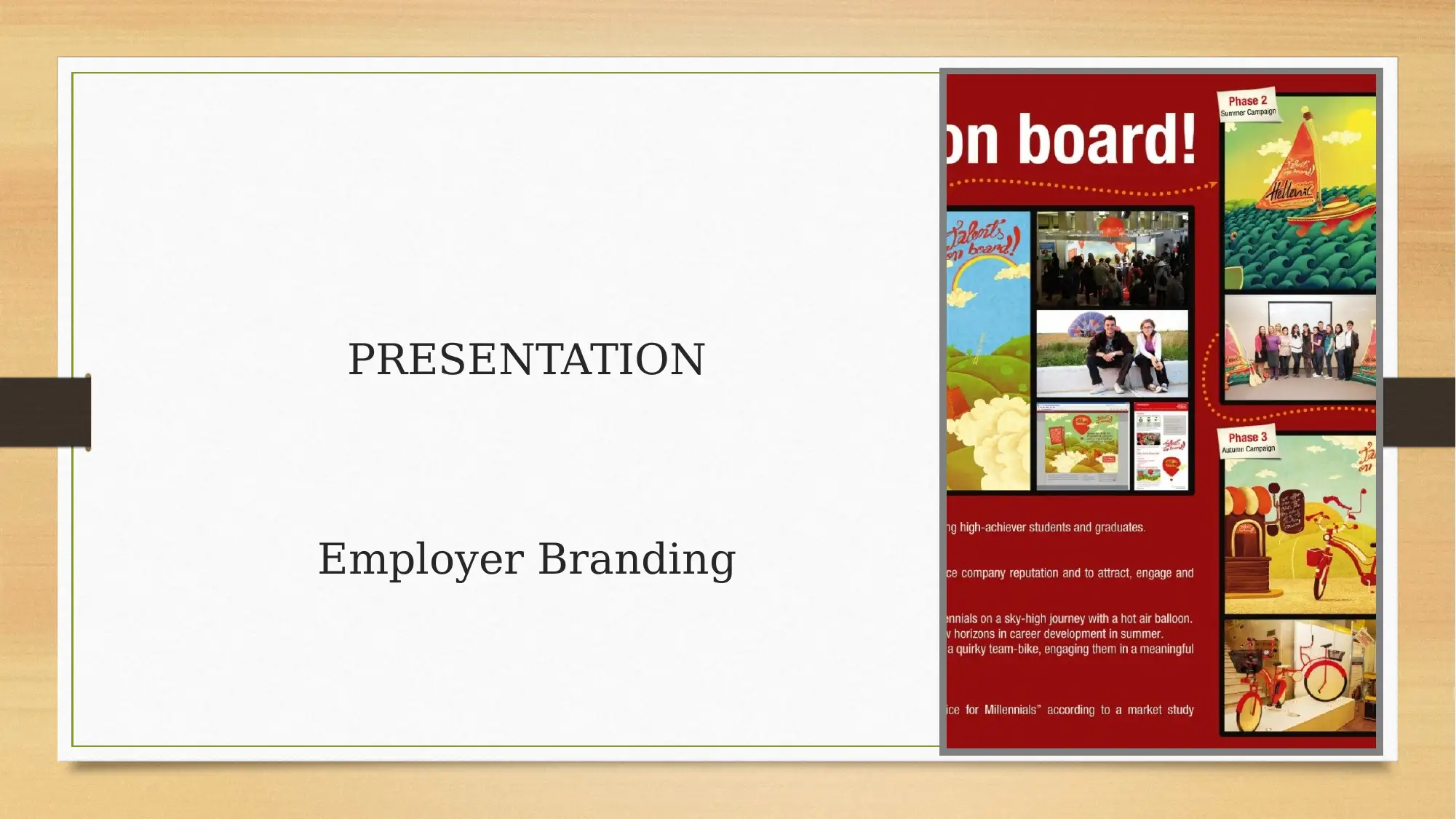
PRESENTATION
Employer Branding
Employer Branding
Paraphrase This Document
Need a fresh take? Get an instant paraphrase of this document with our AI Paraphraser
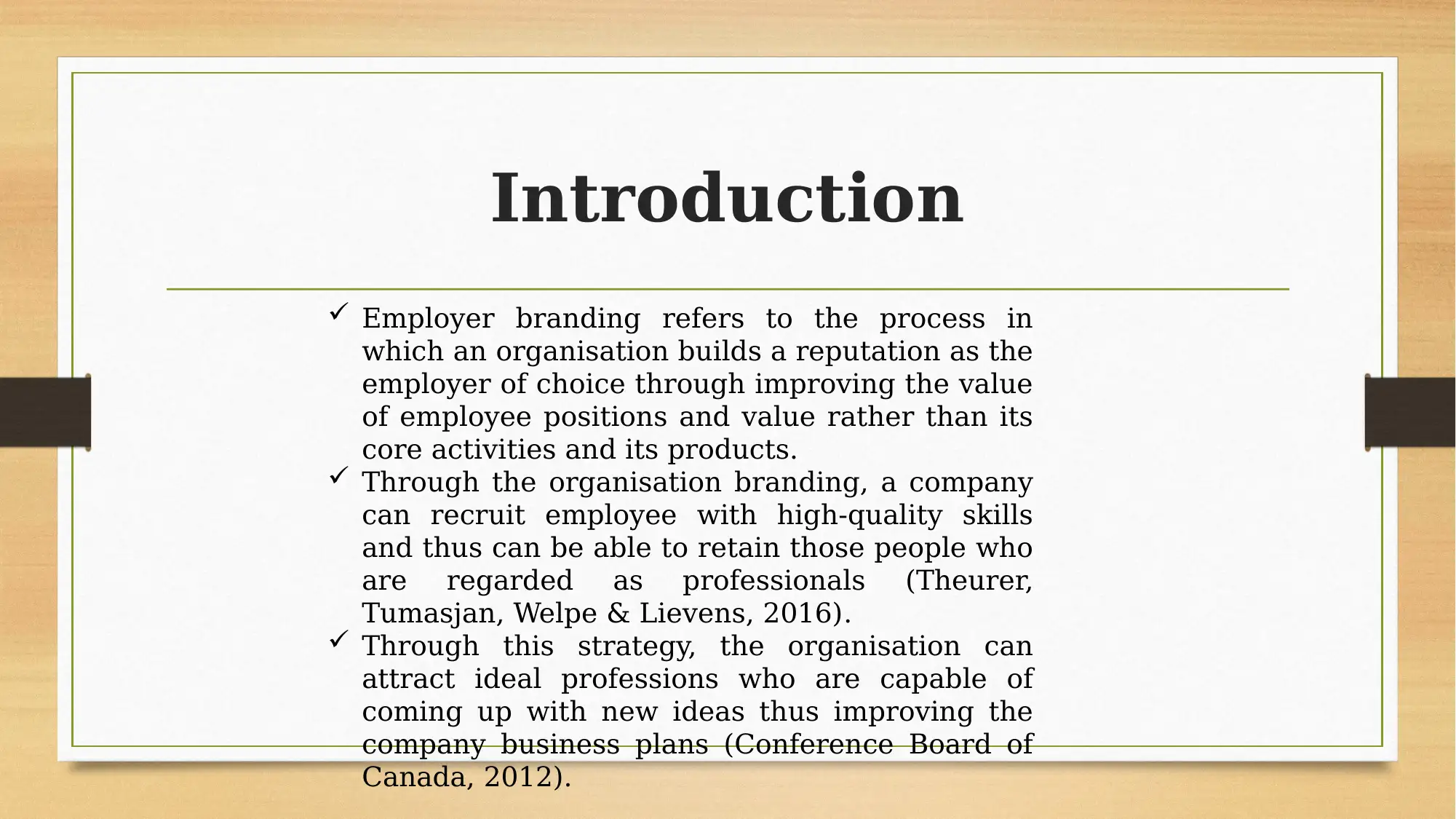
Introduction
Employer branding refers to the process in
which an organisation builds a reputation as the
employer of choice through improving the value
of employee positions and value rather than its
core activities and its products.
Through the organisation branding, a company
can recruit employee with high-quality skills
and thus can be able to retain those people who
are regarded as professionals (Theurer,
Tumasjan, Welpe & Lievens, 2016).
Through this strategy, the organisation can
attract ideal professions who are capable of
coming up with new ideas thus improving the
company business plans (Conference Board of
Canada, 2012).
Employer branding refers to the process in
which an organisation builds a reputation as the
employer of choice through improving the value
of employee positions and value rather than its
core activities and its products.
Through the organisation branding, a company
can recruit employee with high-quality skills
and thus can be able to retain those people who
are regarded as professionals (Theurer,
Tumasjan, Welpe & Lievens, 2016).
Through this strategy, the organisation can
attract ideal professions who are capable of
coming up with new ideas thus improving the
company business plans (Conference Board of
Canada, 2012).
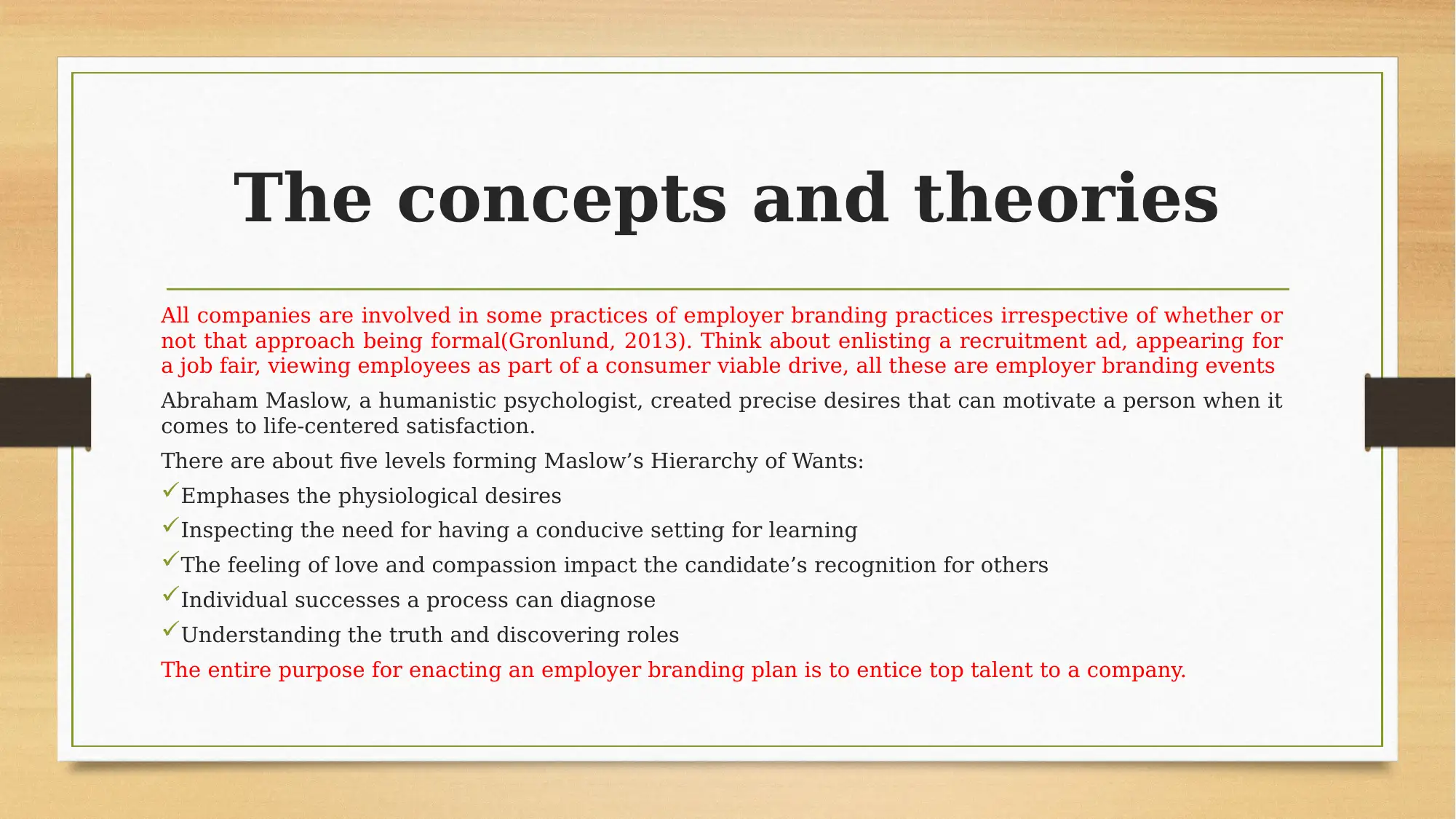
The concepts and theories
All companies are involved in some practices of employer branding practices irrespective of whether or
not that approach being formal(Gronlund, 2013). Think about enlisting a recruitment ad, appearing for
a job fair, viewing employees as part of a consumer viable drive, all these are employer branding events
Abraham Maslow, a humanistic psychologist, created precise desires that can motivate a person when it
comes to life-centered satisfaction.
There are about five levels forming Maslow’s Hierarchy of Wants:
Emphases the physiological desires
Inspecting the need for having a conducive setting for learning
The feeling of love and compassion impact the candidate’s recognition for others
Individual successes a process can diagnose
Understanding the truth and discovering roles
The entire purpose for enacting an employer branding plan is to entice top talent to a company.
All companies are involved in some practices of employer branding practices irrespective of whether or
not that approach being formal(Gronlund, 2013). Think about enlisting a recruitment ad, appearing for
a job fair, viewing employees as part of a consumer viable drive, all these are employer branding events
Abraham Maslow, a humanistic psychologist, created precise desires that can motivate a person when it
comes to life-centered satisfaction.
There are about five levels forming Maslow’s Hierarchy of Wants:
Emphases the physiological desires
Inspecting the need for having a conducive setting for learning
The feeling of love and compassion impact the candidate’s recognition for others
Individual successes a process can diagnose
Understanding the truth and discovering roles
The entire purpose for enacting an employer branding plan is to entice top talent to a company.
⊘ This is a preview!⊘
Do you want full access?
Subscribe today to unlock all pages.

Trusted by 1+ million students worldwide
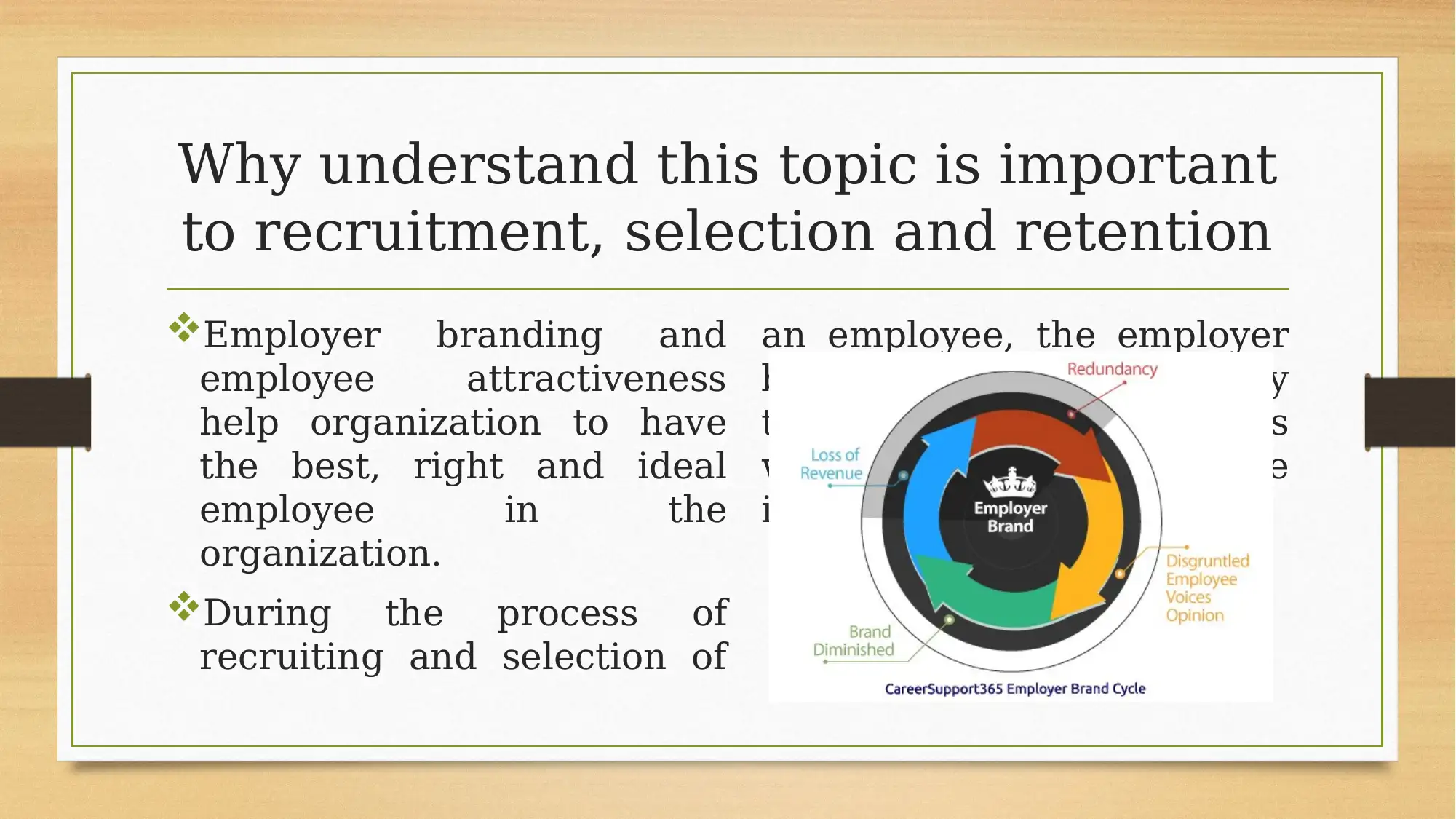
Why understand this topic is important
to recruitment, selection and retention
Employer branding and
employee attractiveness
help organization to have
the best, right and ideal
employee in the
organization.
During the process of
recruiting and selection of
an employee, the employer
brand can be recognized by
the number of applicants
who comes for the
interviews.
to recruitment, selection and retention
Employer branding and
employee attractiveness
help organization to have
the best, right and ideal
employee in the
organization.
During the process of
recruiting and selection of
an employee, the employer
brand can be recognized by
the number of applicants
who comes for the
interviews.
Paraphrase This Document
Need a fresh take? Get an instant paraphrase of this document with our AI Paraphraser
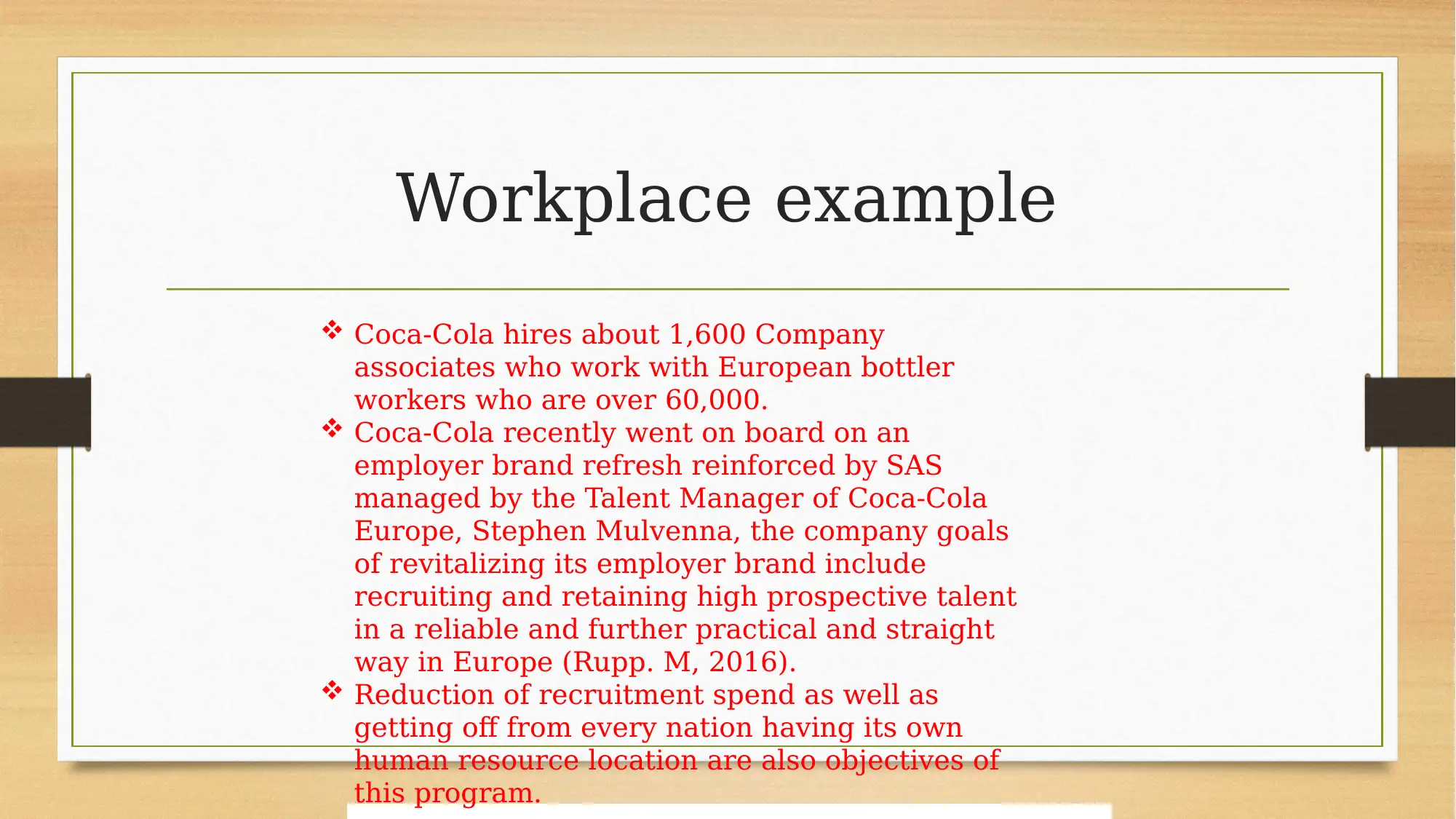
Workplace example
Coca-Cola hires about 1,600 Company
associates who work with European bottler
workers who are over 60,000.
Coca-Cola recently went on board on an
employer brand refresh reinforced by SAS
managed by the Talent Manager of Coca-Cola
Europe, Stephen Mulvenna, the company goals
of revitalizing its employer brand include
recruiting and retaining high prospective talent
in a reliable and further practical and straight
way in Europe (Rupp. M, 2016).
Reduction of recruitment spend as well as
getting off from every nation having its own
human resource location are also objectives of
this program.
Coca-Cola hires about 1,600 Company
associates who work with European bottler
workers who are over 60,000.
Coca-Cola recently went on board on an
employer brand refresh reinforced by SAS
managed by the Talent Manager of Coca-Cola
Europe, Stephen Mulvenna, the company goals
of revitalizing its employer brand include
recruiting and retaining high prospective talent
in a reliable and further practical and straight
way in Europe (Rupp. M, 2016).
Reduction of recruitment spend as well as
getting off from every nation having its own
human resource location are also objectives of
this program.
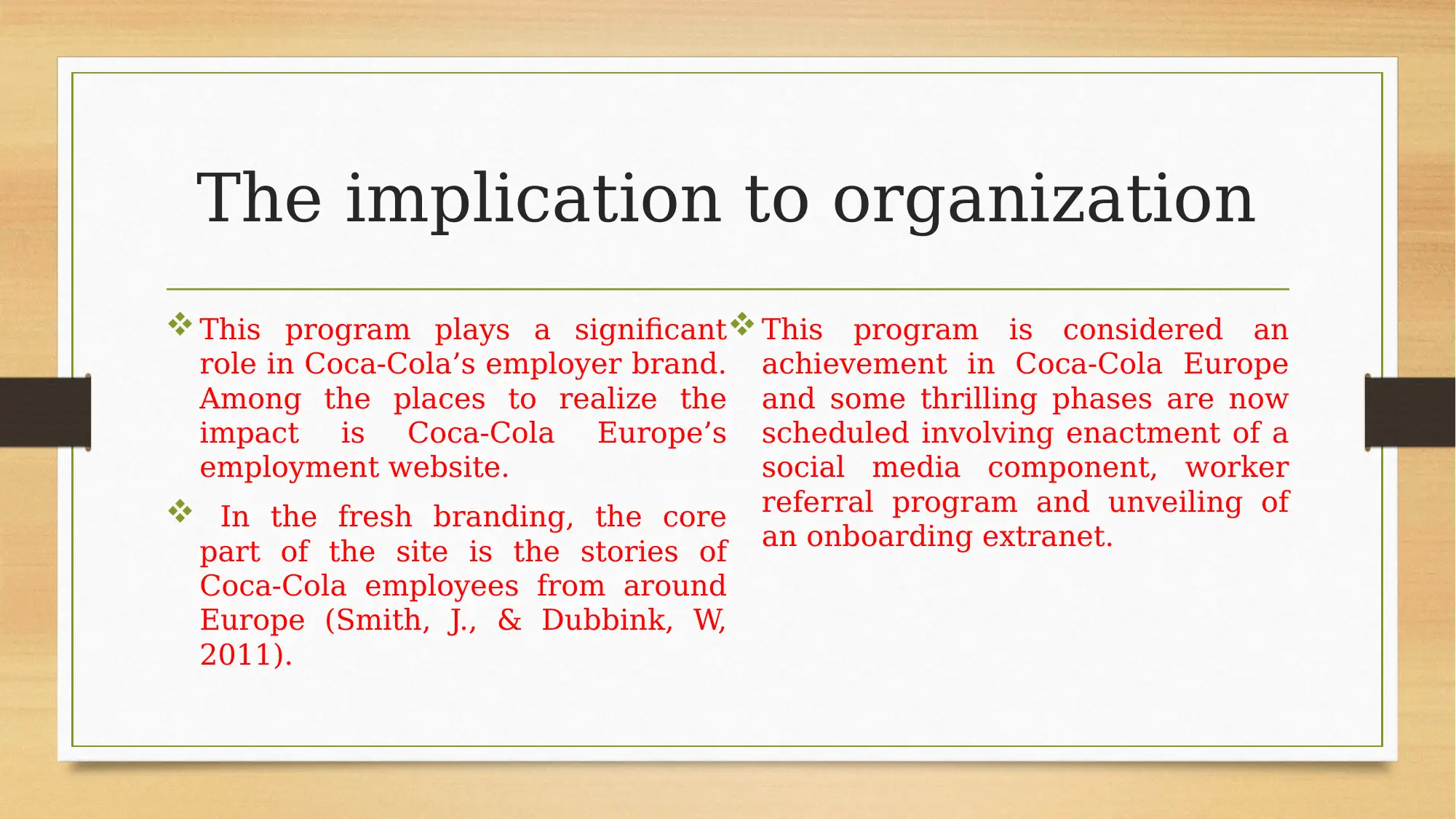
The implication to organization
This program plays a significant
role in Coca-Cola’s employer brand.
Among the places to realize the
impact is Coca-Cola Europe’s
employment website.
In the fresh branding, the core
part of the site is the stories of
Coca-Cola employees from around
Europe (Smith, J., & Dubbink, W,
2011).
This program is considered an
achievement in Coca-Cola Europe
and some thrilling phases are now
scheduled involving enactment of a
social media component, worker
referral program and unveiling of
an onboarding extranet.
This program plays a significant
role in Coca-Cola’s employer brand.
Among the places to realize the
impact is Coca-Cola Europe’s
employment website.
In the fresh branding, the core
part of the site is the stories of
Coca-Cola employees from around
Europe (Smith, J., & Dubbink, W,
2011).
This program is considered an
achievement in Coca-Cola Europe
and some thrilling phases are now
scheduled involving enactment of a
social media component, worker
referral program and unveiling of
an onboarding extranet.
⊘ This is a preview!⊘
Do you want full access?
Subscribe today to unlock all pages.

Trusted by 1+ million students worldwide
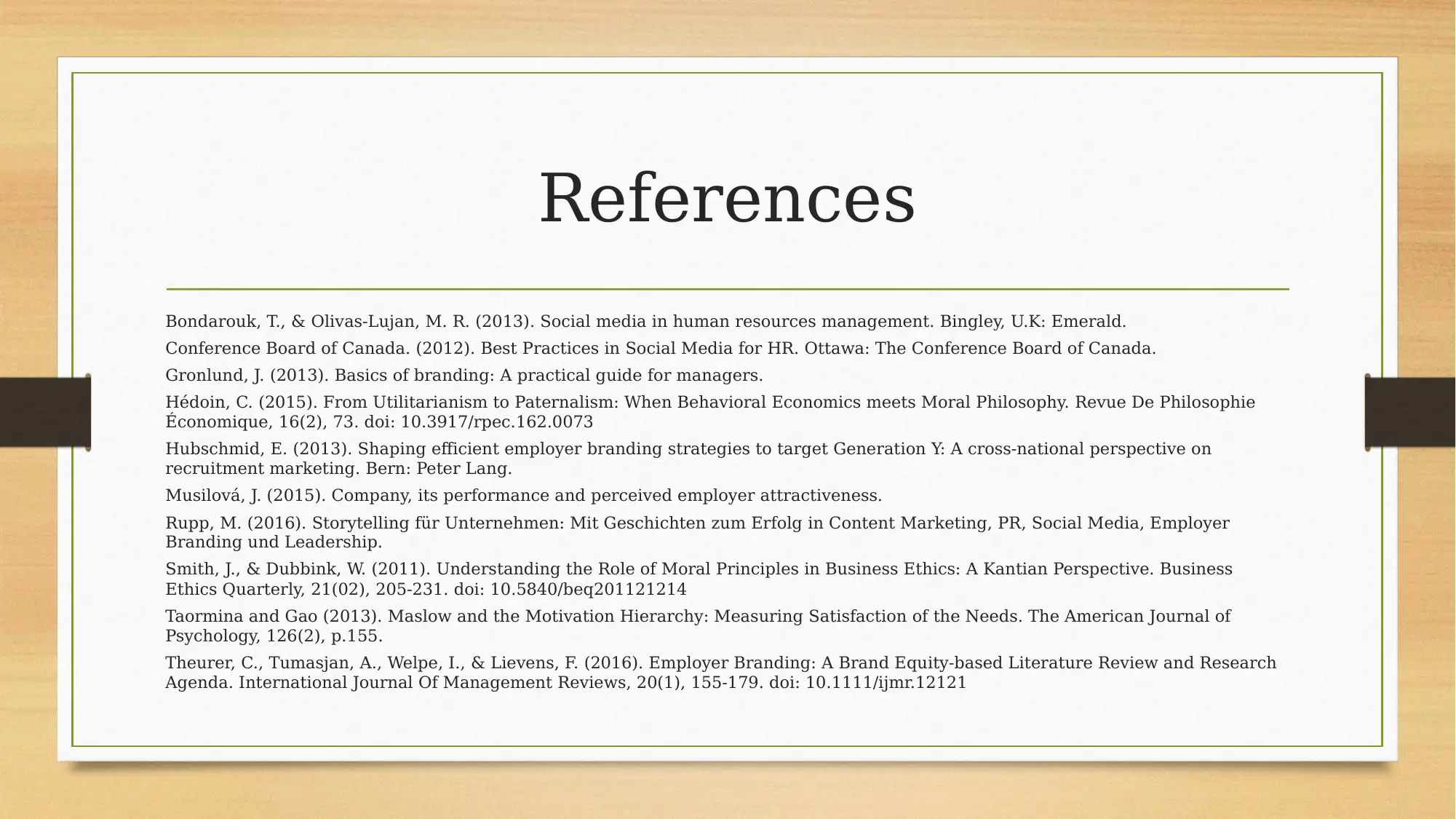
References
Bondarouk, T., & Olivas-Lujan, M. R. (2013). Social media in human resources management. Bingley, U.K: Emerald.
Conference Board of Canada. (2012). Best Practices in Social Media for HR. Ottawa: The Conference Board of Canada.
Gronlund, J. (2013). Basics of branding: A practical guide for managers.
Hédoin, C. (2015). From Utilitarianism to Paternalism: When Behavioral Economics meets Moral Philosophy. Revue De Philosophie
Économique, 16(2), 73. doi: 10.3917/rpec.162.0073
Hubschmid, E. (2013). Shaping efficient employer branding strategies to target Generation Y: A cross-national perspective on
recruitment marketing. Bern: Peter Lang.
Musilová, J. (2015). Company, its performance and perceived employer attractiveness.
Rupp, M. (2016). Storytelling für Unternehmen: Mit Geschichten zum Erfolg in Content Marketing, PR, Social Media, Employer
Branding und Leadership.
Smith, J., & Dubbink, W. (2011). Understanding the Role of Moral Principles in Business Ethics: A Kantian Perspective. Business
Ethics Quarterly, 21(02), 205-231. doi: 10.5840/beq201121214
Taormina and Gao (2013). Maslow and the Motivation Hierarchy: Measuring Satisfaction of the Needs. The American Journal of
Psychology, 126(2), p.155.
Theurer, C., Tumasjan, A., Welpe, I., & Lievens, F. (2016). Employer Branding: A Brand Equity-based Literature Review and Research
Agenda. International Journal Of Management Reviews, 20(1), 155-179. doi: 10.1111/ijmr.12121
Bondarouk, T., & Olivas-Lujan, M. R. (2013). Social media in human resources management. Bingley, U.K: Emerald.
Conference Board of Canada. (2012). Best Practices in Social Media for HR. Ottawa: The Conference Board of Canada.
Gronlund, J. (2013). Basics of branding: A practical guide for managers.
Hédoin, C. (2015). From Utilitarianism to Paternalism: When Behavioral Economics meets Moral Philosophy. Revue De Philosophie
Économique, 16(2), 73. doi: 10.3917/rpec.162.0073
Hubschmid, E. (2013). Shaping efficient employer branding strategies to target Generation Y: A cross-national perspective on
recruitment marketing. Bern: Peter Lang.
Musilová, J. (2015). Company, its performance and perceived employer attractiveness.
Rupp, M. (2016). Storytelling für Unternehmen: Mit Geschichten zum Erfolg in Content Marketing, PR, Social Media, Employer
Branding und Leadership.
Smith, J., & Dubbink, W. (2011). Understanding the Role of Moral Principles in Business Ethics: A Kantian Perspective. Business
Ethics Quarterly, 21(02), 205-231. doi: 10.5840/beq201121214
Taormina and Gao (2013). Maslow and the Motivation Hierarchy: Measuring Satisfaction of the Needs. The American Journal of
Psychology, 126(2), p.155.
Theurer, C., Tumasjan, A., Welpe, I., & Lievens, F. (2016). Employer Branding: A Brand Equity-based Literature Review and Research
Agenda. International Journal Of Management Reviews, 20(1), 155-179. doi: 10.1111/ijmr.12121
1 out of 7
Related Documents
Your All-in-One AI-Powered Toolkit for Academic Success.
+13062052269
info@desklib.com
Available 24*7 on WhatsApp / Email
![[object Object]](/_next/static/media/star-bottom.7253800d.svg)
Unlock your academic potential
Copyright © 2020–2025 A2Z Services. All Rights Reserved. Developed and managed by ZUCOL.





